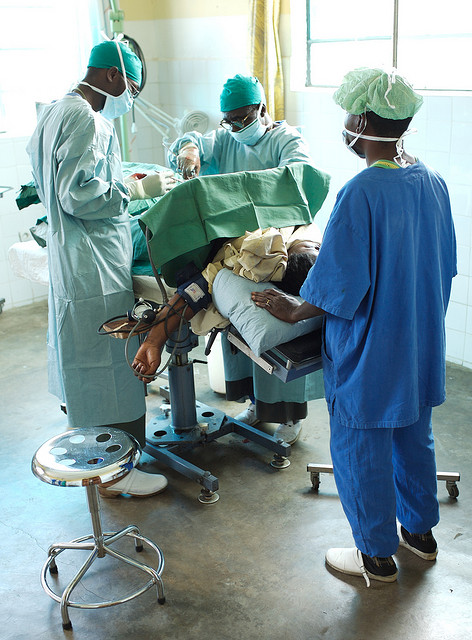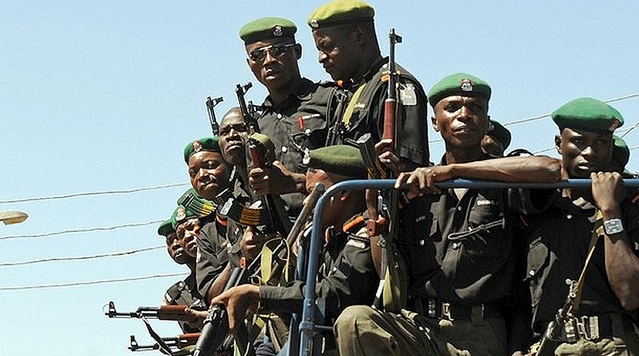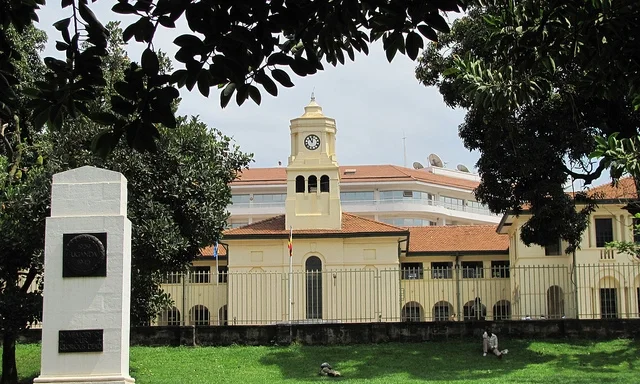Olivia Elswick, Asia CorrespondentLast Modified: 08:07 a.m. DST, 19 June 2014
 MARIDI, South Sudan -- For this edition of the international volunteer interview series, I spoke with Theresa Kiblinger and Ariel Zarate, American volunteers living in “the bush,” of Maridi, South Sudan.
MARIDI, South Sudan -- For this edition of the international volunteer interview series, I spoke with Theresa Kiblinger and Ariel Zarate, American volunteers living in “the bush,” of Maridi, South Sudan.
Despite South Sudan’s prevalence in international news these day, and obstacles like two hours treks through six-foot-tall grass to get to a mobile clinic, and bouts of malaria, it is clear from talking to these two extraordinary women, that there is nowhere else they’d rather be.
What were your thoughts about South Sudan before you arrived and how have they changed or stayed the same?
TK: I knew basic facts like it is the newest country in the world but I didn’t know much more about the historical background of this newly founded nation. I was just excited to be heading to Africa, and I figured I would learn while I am here. And I’ve done just that. My eyes have really been opened to the struggles that these people have endured through decades of war, and how they are working to overcome their past to create hope for the future.
What prepared you for this job? Has there been a defining moment in your life that made you decide to take the direction you did?
AZ: I went to Lewis University in Romeoville, Illinois and I graduated with a Bachelors in Social Work in the fall of 2013. I have been drawn to international social work since high school when I decided that social work was the field I want to go into. I attended Lewis University primarily for the international service opportunities they offered. The primary extracurricular activities I participated in during my college career were social justice or social service oriented.
After participating in my first overseas mission trip to Bolivia in 2010, I was hooked. Traveling, serving and learning about new cultures brought peace and joy to my life. I continued with my mission work throughout my four years, going to the Philippines twice and participating in multiple domestic service projects.
As graduation approached and the time to answer the question of what are you going to be when you grow up came closer I was faced with a decision. Do I go to grad school or do I serve for a year. It was a huge decision to make and one of the deciding factors was some advice a friend gave me. He said to do whatever I would regret most not doing in 5 years. If you will look back on it and wish you had done it, then you have to do it. And that is what I did. I knew in my heart that coming to Africa was what I was meant to. No matter where I travelled I was always drawn here.
TK: I went to Rockhurst University, a Jesuit school in Kansas City, Missouri, where I got my Bachelor’s of Science in Nursing. I think my whole schooling has helped prepare me for this mission work. My clinical rotations in nursing school definitely prepared me for the skills that I have been using at the clinic. I also have volunteered in Africa previously, so the transition to South Sudan was made much easier by my other experiences in Africa. I’m very passionate about public health and health education. I also am extremely interested in maternal and child health (MCH).
1 Next Page » 2 3
Published: 19 June 2014
(Page 2 of 3)
We have been working to start a MCH unit at our clinic, so it has been great to help with the building blocks of this program. When I’m finished with my year in South Sudan, I’m planning on volunteering at another site in Africa, the place is still to be determined. I want to get more experience, and then hopefully I will go back to school to get my Masters in Public Health and possibly Tropical Medicine or Maternal and Child Health. I see myself doing global health at least for the next few years of my life and then we will see where that leads me!
What is a day in the life like?
TK: Each day in South Sudan is jam-packed with activities and responsibilities. I work as a staff nurse at the Don Bosco Health Center every morning until the afternoon. We see a variety of cases and average around 40 patients each day. I’m in charge of taking vital signs, giving injections, dressing wounds, and dispensing medications. In the afternoons I teach English Composition to classes 7, 8, and the Salesian aspirants. After school I coach the girls football team. Every evening we have rosary with the kids followed by evening prayer, dinner, and finally bedtime. I wake up the next day and repeat it all.
AZ: A typical day for me starts with morning mass at 6:45. Many of the students attend this mass as well. After mass I take attendance for the Daughters of Mary which is a Catholic group for young women dedicated to living more like Mary and growing in our faith as Christians. After that we have a quick breakfast and morning assembly. Monday, Wednesday and Friday I go with a VSDB sister to a village school that we are in charge of running and organizing.
We conduct assembly there, teach various subjects, get uniforms and other necessary things in order to get the new school on its feet. Those afternoons I teach art and religion at our base school. Tuesday and Thursday I start my day in the secondary school then teach the 5 aspirants we have English and Group Dynamics. The rest of the afternoon after lunch is spent in either art or religion and just being present in the school to assist with conflicts or difficulties that arise. Most afternoons I help a few students practice reading with small books we have here.
How are you able to handle all of your responsibilities while keeping a healthy work/life balance?
TK: I have really stressed “self-care” since I got to South Sudan. We are staying in a very remote village with minimal chances to get out and do things to separate mission life and our personal lives. However, I always try to take time each day to do things that I need to do to reflect and process this experience. Usually this comes in the form of running in the early mornings. It is such a peaceful time to be by myself and forget about everything else.
AZ: After a long day, it’s usually a huge glass of water, marking, class prep, oratory or some self-care Jillian Michaels with Theresa. Our days are super packed and even when we are not in class the kids are always around so our days have a routine but are always different.
How have you adjusted to simple living?
TK: It actually has been really nice and refreshing to embrace the simple living aspect. Time and material possessions are not the basis of life. It is the relationships that you have with one another that are important. It has been completely different from my life in the States, but definitely a good kind of different.
Do you ever feel unsafe?
TK: I have never felt unsafe even with the recent political instability. Maridi is such a peaceful place and the tribe that lives in this area are extremely peaceful people. It also has helped that I’ve been here for a while now, and people in the community know who I am and my role here.
Do you find that women are treated differently than men at your site?
TK: Definitely. It is extremely evident in the way people talk and act towards women that they are not viewed as equals to men. The boys in school don’t understand why the girls need to have a football team. They say that the girls need to go home right after school to cook and clean. Even as a teacher, I feel like the kids don’t fully respect me or listen to me as they do towards a male teacher.
1 Next Page » 2 3
Published: 19 June 2014
(Page 3 of 3)
What are the most critical problems faced by people in your area?
TK: These people have so many obstacles that they have faced in the past and are still trying to overcome. They have lived through decades of war. Many of the kids have lost one or even both parents and this county, specifically the village where I am working, has the highest rate of HIV in the entire country. These people are trying to overcome all these obstacles to have a hopeful future, but their past struggles are still extremely evident in everyday life.
What is the most rewarding part about living there?
TK: The relationships that grow deeper each and every day. The kids that I work with are the most incredible group of kids that I have met. I don’t think I’ve loved a group of kids as fully and deeply as these little mischievous, crazy kids. They make this experience completely worth it. My best memories are every moment I am with the kids. There is nothing better than holding a baby in my arms as I pray the rosary as the sun sets, or when a little girl grabs my hand and we skip down the dirt road singing songs. Its the little moments each day that warm my heart and remind me of the reason I’m even here in the first place--to love these kids.
Can you tell me about one child who has impacted you?
TK: There is one 10-year old boy named Santo who has epilepsy and also has special needs. But this little boy constantly teaches me how to love unconditionally. Every day I hear him screaming my name across the compound and then he takes off and greets me with the biggest hug. He asks how I am, then he goes through all the members of the community asking how they are and where they are. This happens at least 3 times each day. Even days when I don’t have patience to go through this same conversation over and over, he never stops loving me or going out of his way to give me a giant hug. It has been a huge lesson in loving each person as they are, and I have the best example of how to imitate this unconditional love through the life of Santo.
Have you ever had a “this is my home” feeling?
TK: I have that feeling almost every day. Honestly, I have felt at home since I first stepped out of the car and arrived in Maridi 10 months ago. I was greeted by the sweetest, brown-eyed 'kiddos' and I immediately fell in love. I knew that I was home. I get that feeling when the little kids call me their mother, when I wipe tears away from a child’s face at the clinic, when I snag babies to hold and love...It’s little moments each day that really make me feel like this is my home.
What are your hopes for the people you’ve interacted with?
TK: I hope that they can see past the past and strive for the future. They are some of the brightest kids I’ve met, and they have so much potential. I hope they don’t get stuck in the cycle of life here- get married after 8th grade and have kids right away. While that isn’t bad, they just have so much more to offer this country. These are the kids that will really make this country progress in the future.
What lessons will you take with you?
TK: This mission experience has made me learn so much about myself and made me grow in ways I don’t think I’ll fully understand until I get back home. I’ve learned so much about living in the present and loving people in the moment even when it’s difficult. The people here have shown me how to see the world in a different way, with a different focus.
AZ: Coming here was the best decision I have ever made. Not only have I grown immensely in my faith but I have grown immensely as a person. The lessons I have learned and the ways I have changed for the better will stay with me forever.
Return to Page 1 »
Follow Olivia on Twitter
Twitter: @nahmias_report
Asia Correspondent: @OCELswick









































